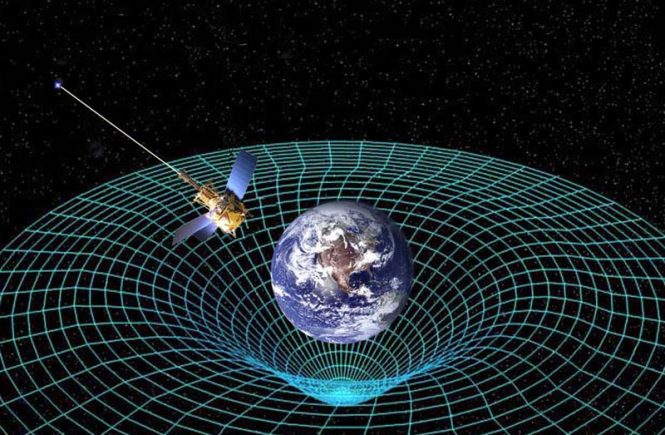It’s important to understand Einstein’s work on the space-time continuum and how it relates to the Enterprise traveling through space. In his Special Theory of Relativity, Einstein states two postulates:
- The speed of light (about 300,000,000 meters per second) is the same for all observers, whether or not they’re moving.
- Anyone moving at a constant speed should observe the same physical laws.
Putting these two ideas together, Einstein realized that space and time are relative — an object in motion actually experiences time at a slower rate than one at rest. Although this may seem absurd to us, we travel incredibly slow when compared to the speed of light, so we don’t notice the hands on our watches ticking slower when we’re running or traveling on an airplane. Scientists have actually proved this phenomenon by sending atomic clocks up with high-speed rocket ships. They returned to Earth slightly behind the clocks on the ground.

What does this mean for the Captain Kirk and his team? The closer an object gets to the speed of light, that object actually experiences time at a significantly slower rate. If the Enterprise were traveling safely at close to the speed of light to the center of our galaxy from Earth, it would take 25,000 years of Earth time. For the crew, however, the trip would probably only take 10 years.
That’s why we need to look at Einstein’s later theory, the General Theory of Relativity, which describes how gravity affects the shape of space and flow of time. Imagine a stretched-out sheet. If you place a bowling ball in the middle of the sheet, the sheet will warp as the weight of the ball pushes down on it. If you place a baseball on the same sheet, it will roll towards the bowling ball. This is a simple design, and space doesn’t act like a two-dimension bed sheet, but it can be applied to something like our solar system — more massive objects like our sun can warp space and affect the orbits of the surrounding planets. The planets don’t fall into the sun, of course, because of the high speeds at which they travel




